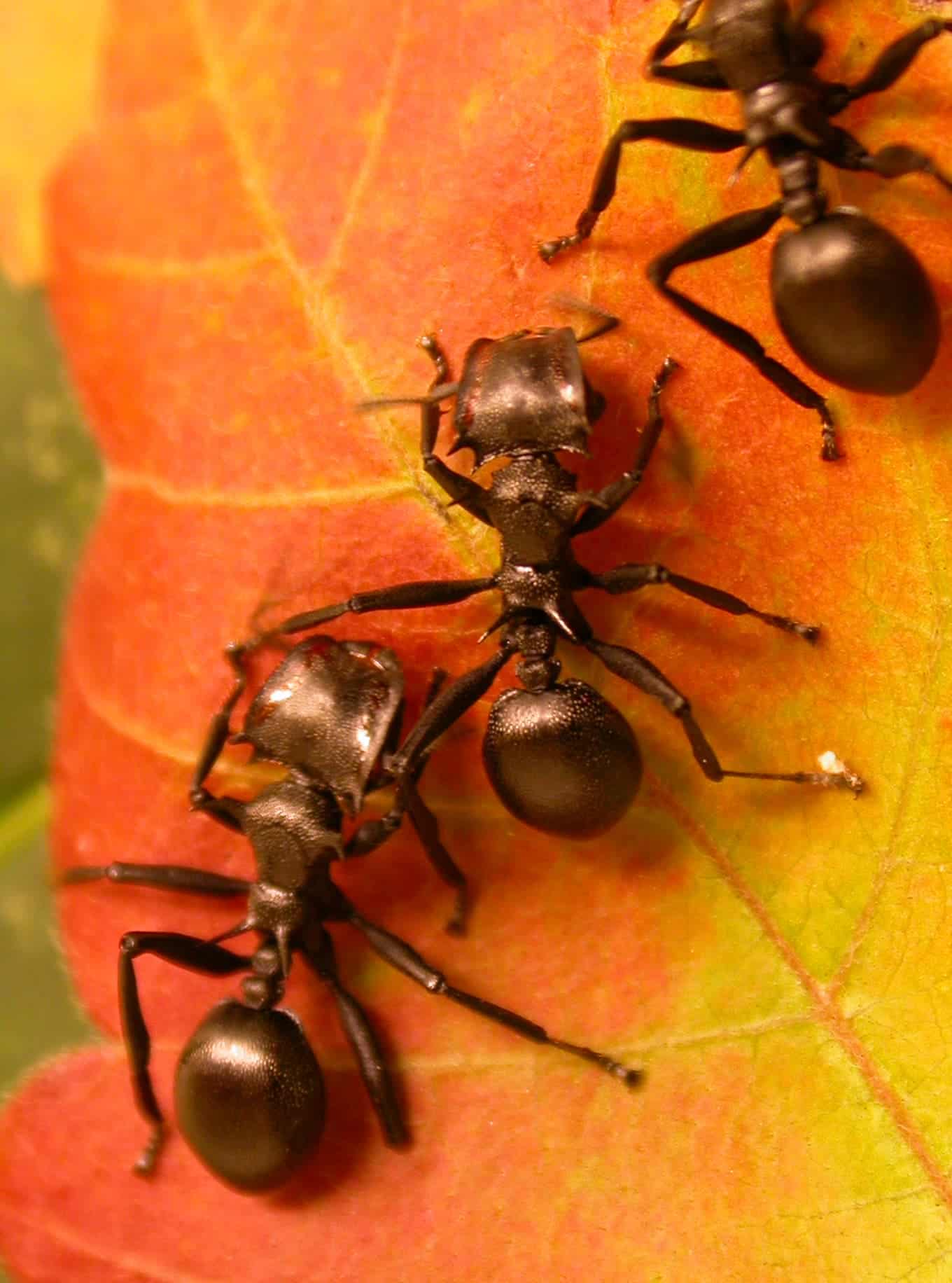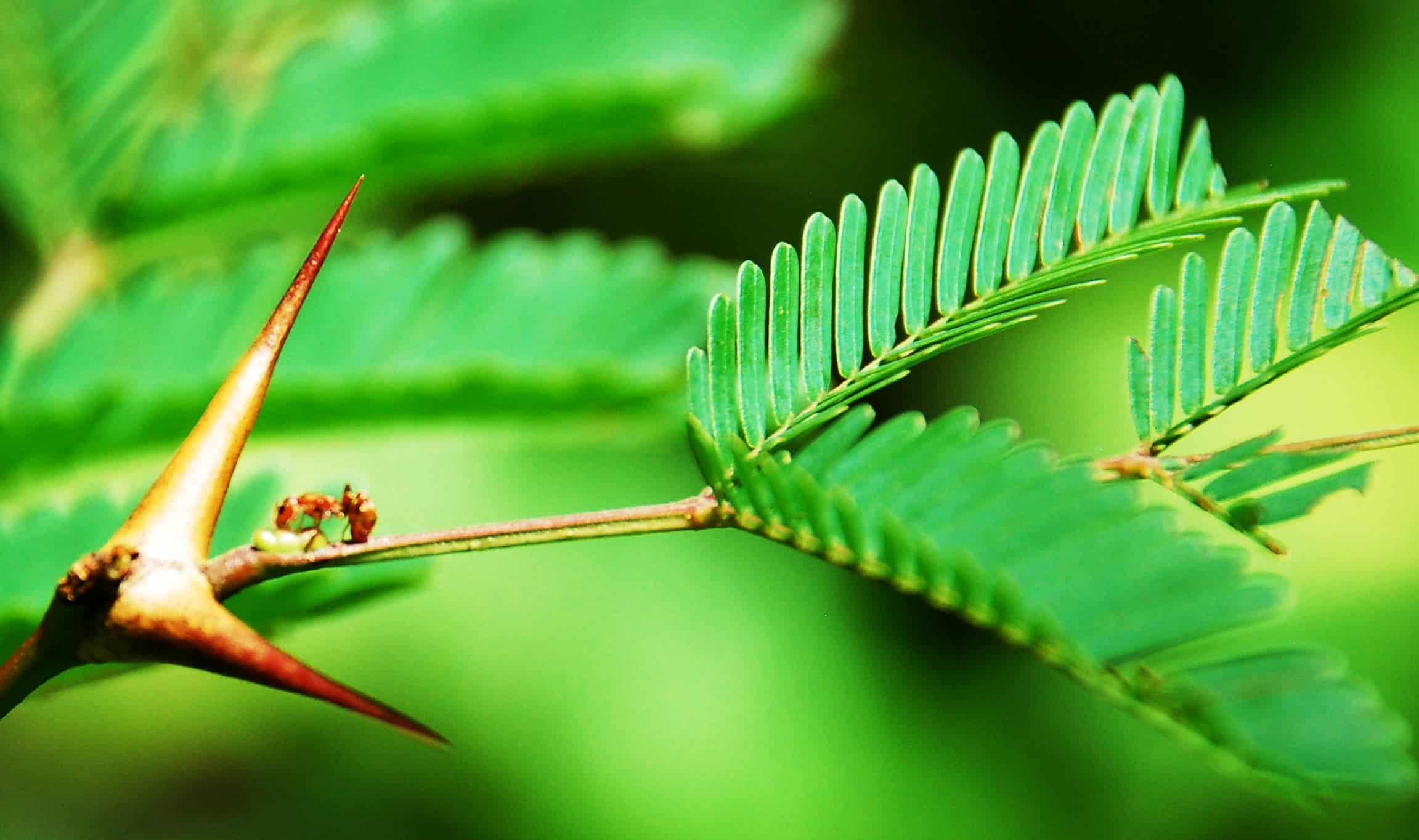Plants may be more dynamic thank you think — a new study found that plants evolved alongside ants, persuading the insects to protect and take care of them.

Arboreal ants that have evolved closely with the trees they live in. Image credits: Field Museum / Corrie Moreau.
If you were to look at the interaction between ants and some plants, you’d think it’s a one-way street. Plants offer shelter and succulent nutrients, while ants just come and reap the rewards. But that couldn’t be further from the truth — a new study analyzed the genome of plants and ants that share the same ecosystem, finding that plants have quite a few tricks up their sleeve.
Essentially, plants evolved around the ants, developing ways to trick the insects into protecting them and spreading their seeds.
“My main interest is in studying how interactions between organisms have evolved, and how these interactions shape their evolutionary history. When did ants start using plants, and when did plants start making structures for ants to use?” says Matt Nelsen, a Field Museum post-doctoral researcher and the lead author of the PNAS study.
The structures Nelsen is referring to are hollow spikes that some plants developed. Ants use these spikes as shelter and protection against other insects and even mammals. Yet while they’re protecting themselves, the ants also protect the plant. Similarly, other plants have started producing juicy nectar that the ants like to eat — so much that they will protect the plant from unwanted intruders. Some ants are freeloaders, eating the nectar and running away, but most of the time, ants protect the plant. In a way, the plant pays a protection tax for the ants to act as its bodyguards.

A plant that evolved hollow thorns for ants to shelter in. In exchange, the ants defend the plant from attacks from other insects and mammals. Image credits: Field Museum / Corrie Moreau.
Another creative mechanism developed by some ants relies on using the ants to spread its seeds. Plants get ants to help them move their seeds around, by bribing them with rich food packets attached to seeds called elaiosomes.
“The ant will pick up the seed and carry it away, eat the food packet, and discard the seed – often in a nutrient-rich area where it’ll grow better, and since it’s farther away from its parent, they won’t have to compete for resources,” Nelson explains.
The research team looked at traits such as these, mapping the genetic history of ant-friendly traits for plants, as well as the ants’ plant usage. It seems that plants may be in the driver’s seat since plants didn’t evolve these specialized structures until long after ants had been relying on them for food and habitat.
“Some ants don’t directly use plants for much, while others rely on them for food, foraging habitat, and nesting. We found that to become fully invested in plant-use, ants first began foraging arboreally, then incorporated plants into their diet, and then from there, they started nesting arboreally. While this stepwise shift towards an increased reliance on plants is intuitive, it still surprised us,” says Nelsen.
The next question would follow in a chicken-and-egg fashion: what came first, the ants that took advantage of the plants, or the plants that set things up for the ants? The history of ants and plants evolving together goes back to the Mesozoic when dinosaurs ruled the Earth, and it’s not easy to tell from fossils how the organisms interacted.
“There are very few fossil records of these structures in plants, and they don’t extend very far back in time. And there are tons of ant fossils, but they typically don’t show these ant behaviors–we don’t necessarily see an ant preserved in amber carrying a seed,” says Nelsen.
However, using DNA data and ecological databases, researchers mapped the history of a plant’s ant-friendly traits and of ants’ plant use, finding that plants seem to have made the first step in this partnership. In other words, it appears that plants initiated the collaboration, and they have more to gain from it — particularly since ants that eat, forage on or nest in plants don’t seem to be better off than those who don’t.
We don’t see parts of the ant family tree that includes ants relying on plants for food or habitat diversifying or growing any faster than those parts of the tree that lack these interactions,” says Nelsen. “This study matters because it provides a glimpse into how these widespread and complex interactions evolved.”
The study has been published in the Proceedings of the National Academy of Sciences,









